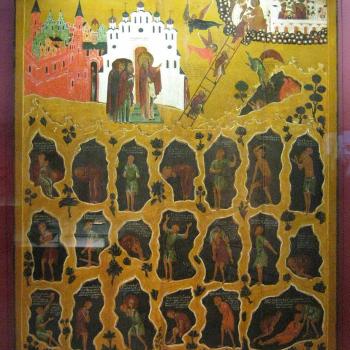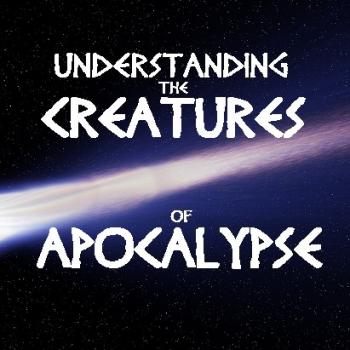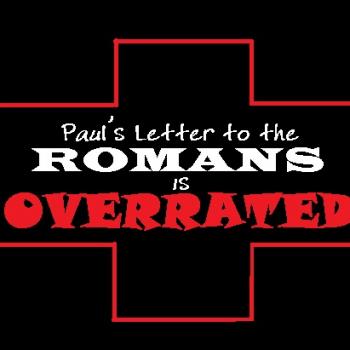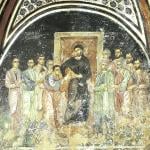
Here comes Sunday’s Gospel about Jesus brokering wholeness for a leper—except he wasn’t really a leper at all.
Mark 1:40-45
A leper came to Jesus and kneeling down begged him and said,
“If you wish, you can make me clean.”
Stop. Ask yourself: what biomedical condition does this sick man have? Do we have any X-rays? No. What about blood tests? Nothing. What were his lab results? We don’t have any. Therefore, we don’t understand the underlying biomedical condition of this sick person.
Here’s a video on biblical leprosy:
Wholeness & Hansen’s Disease
Hansen’s disease is named after the Norwegian researcher who discovered it in 1868. While not that infectious, it is exceptionally chronic. As it progresses, it causes loss of sensation and increasingly painless ulceration of the extremities. Although it deforms the face, Hansen’s disease only rarely affects the scalp and is never white.
Given those symptoms, now go read about “biblical leprosy” in Leviticus 13—14. See what spurious familiarity with Bible stories and sucky homilies do to people? With the disease of “immaculate perception,” myriads of Christians wrongly believe that biblical leprosy is Hansen’s disease. But even a basic reading and understanding shows that not to be the case.
Leviticus 13—14 describes something like psoriasis, a scaly skin condition, but not leprosy as we imagine it (i.e., Hansen’s disease). That doesn’t sound so serious, right? Then what’s the big deal?
What is going on with this story?
Healing & Wholeness
Moved with pity, [Jesus] stretched out his hand,
touched him, and said to him,
“I do will it. Be made clean.”
Stop. As we discussed recently, neither the Evangelist we call “Mark” nor the historical Jesus understood sickness in a biomedical manner. Unlike 21st-century Americans, ancient people did not have the disease-view when it came to sickness. Instead, they interpreted sickness as “illness.” These are important distinctions.
The Leprosy left him immediately, and he was made clean.
Stop. Does this remind you of another Gospel story? It should. Just like the personified Fever “left” Peter’s mother-in-law (last Sunday’s Gospel), so also the personified Leprosy “left” the sick man in this Sunday’s Gospel. According to the Gospels, both Fever and Leprosy are demons, evil spirits who enjoy harming powerless humans.
Somehow, the Galilean peasant folk healer Jesus is authorized to sanction these demons. We’ll see how “Mark” understands that next Sunday.
What Is Wholeness?
Then, warning him sternly, he dismissed him at once.
[Jesus] said to him, “See that you tell no one anything,
but go, show yourself to the priest
and offer for your cleansing what Moses prescribed;
that will be proof for them.”
Stop. Moses taught that Israelites were to be holy as their patron God was holy (Leviticus 19:2). But what does holiness mean?
Context Scholar Jerome Neyrey explains that, essentially, holiness meant exclusivity and wholeness. Accordingly, the concept of wholeness pervaded the Judaean culture. Biblical holiness and Israelite bodily wholeness are synonymous just as dividedness or being blemished or maimed are.
Read the Priestly Genesis myth (1:1—2:4a). Did God create any hybrid creatures, any imperfect or blemished beasts? No—the Persian-authorized scribes depict God creating genuine, idealized, or “perfect” fish, birds, and animals. Note where a “perfect” bird is (the air), how it moves (flies), and what it eats (seed).
Because wholeness equals holiness, whole animals are therefore holy animals, exclusive to God. They may be sacrificed and/or eaten by holy people. Therefore these creatures belong to the ideal living beings created by God in Genesis 1:1—2:4a.
Too Much or Too Little
But what if a creature had three legs, or a hundred? Then, such a beast wouldn’t be whole in the Biblical sense, and therefore couldn’t be holy, either.
If a beast had too much of something, that made it un-whole, and thus, unholy. Too little of something also means unholy. Is it androgynous? Then it’s also unholy in the biblical sense. Does someone have a physical deformity? Then they can’t be admitted to the Holy Place. See? Only whole things, holy things, belong there, whether to offer sacrifice or to be sacrificed (Leviticus 21:16-20).
And what does Leviticus command about Israelites afflicted with the biblical polluting skin condition we call leprosy via spurious familiarity? Make them live alone—a fate worse than death for a Mediterranean collectivist. Put them outside, with the outsiders (Leviticus 13:46).
Jesus’ Project: Wholeness, Holiness & Healing
As we said before, Jesus doesn’t cure. Instead, Jesus heals. Healing means to make persons “whole” again (Luke 7:10). So Jesus makes bodily limbs “whole,” whether the legs be paralyzed (John 5:6–15; 7:23) or withered away (Matthew 12:13). By these “mighty deeds,” Jesus restores wholeness by regaining for the sick person that which was lost (Matthew 15:31).
What was Jesus about? The historical Jesus was all about a new political-religious system called “the Kingdom of God.” “The Kingdom of God” or “Reign of God” means Israelite theocracy. Theocracy is a popular idea in the Middle East—go look at Iran. What was Jesus about? Israelite theocracy.
To this end, Jesus (probably after his shamanic teacher John died) called together a coalition of fellow starving peasant day-laborers and fishermen (likely teenagers). He did this to inform his fellow Israelites about the forthcoming theocracy. The good news was that, in Jerusalem and its vicinity (not a planet-wide event), theocracy was coming soon! Some Israelites accepted it and joined Jesus’ coalition. Many others rejected it.
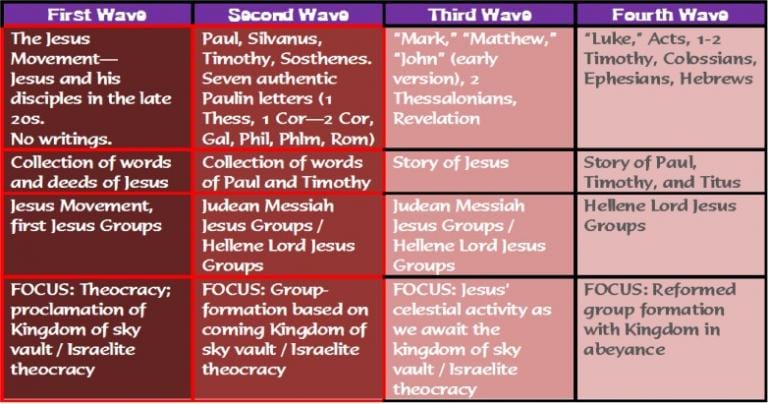
Those first-wave Israelites who joined with Jesus considered him to be a holy man and prophet. If a “civilized” Israelite (i.e., one assimilated by Greco-Roman culture) were to observe Jesus in this way, he or she would call him “a son of God,” that is, a holy man. This is what 21st-century anthropologists would term “a shaman.”
Working Wholeness
And how did the Galilean coalition assist Jesus in proclaiming the forthcoming Israelite theocracy? Definitely not in ways comfortable to the intellectual sages celebrated in Western seminaries and secular academia! Instead, the Jesus Movement did this in shamanic fashion—via folk healing involving exorcising demons by inducing altered states of consciousness.
This was to prepare and include Galilean peasantry—seventy-five percent of Herodian Palestine’s population—into theocracy.

Greedy Elites Determine Holiness & Wholeness
Urban elites incessantly criticize Jesus for failing to live according to their “Great Tradition.” The Markan Jesus repeatedly violates the purity rules (1:41; 2:13–17; 4:35—5:20; 5:24–34; 5:41; 7:24–30; 7:31-37)? Jesus always touched un-whole people—the sick, the dead, those physically deformed, and those possessed by demons.
Repeatedly Jesus violates purity rules regarding the body (7:33; 8:23-25), or proper meal practice (6:37–44; 8:1–10), or concerning sacred times (2:24; 3:1–6), or about holy places (11:15–16; 12:33).
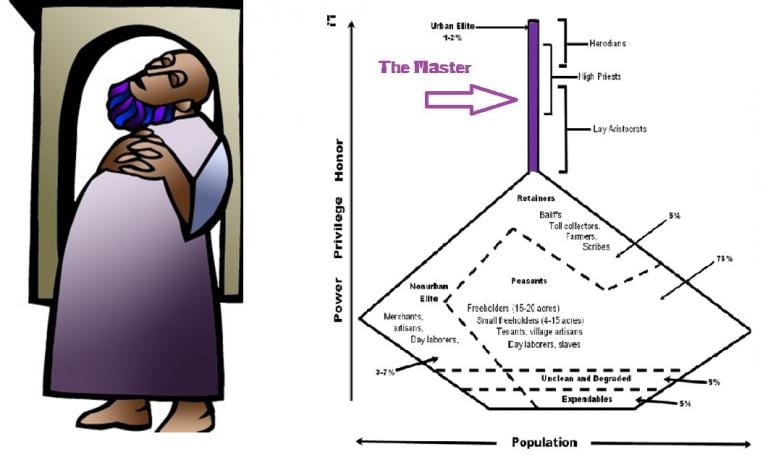
Clearly, Jesus was a rebel or iconoclast, huh? Indeed, that’s how the Urban Elite saw him. But despite all that, Jesus wasn’t really a rebel, or iconoclast, or rule-breaker, or a revolutionary. He was just a starving poor peasant God established as a holy man (folk healer). Even if he desired to keep the Great Tradition, being a Galilean peasant, he couldn’t afford to!
Holy Temple & Wholeness
For Jesus and his fellow Israelites in the first wave, theocracy was unthinkable beyond Jerusalem and its temple. How could you have an Israelite theocracy without the Jerusalem Temple, the Holy Place where God and God’s people interacted? But only whole people were fit to participate in Temple worship. Therefore only whole Israelites could be included in the forthcoming theocracy.
But that meant all those sick and unclean Galilean peasants would be excluded.
Therefore, Jesus and his coalition had to heal the sick. This would fulfill the requirements to worship (Leviticus 21:17-23). God had to make his people whole again. So in this Sunday’s Gospel, Jesus brokers favor with God in Alternate Reality, and the “leper” is healed.
Wholeness & the Passive Voice
Americans have a difficult time with the passive voice. Don’t miss it when Jesus says,
“Be made clean.”
What this indicates is Jesus is not performing the action. Instead, God performs the healing. God grants the favor by making this Israelite whole. But Jesus brokers the favor.
Cast in “THE GODFATHER” characters, God is like Don Corleone, the Patron from whom the favor comes. Jesus is like Tom Hagen, the broker who mediates between patron and client, the one who sets up the meeting. The unnamed man with the polluting skin condition is like Amerigo Bonasera, the client in distress. Here’s a famous clip from “THE GODFATHER.”
https://www.youtube.com/watch?v=XPTAjNVvrYg
Observe how little is seen or heard from Tom Hagen, the broker. To turn the New Testament documents’ focus from the God of Israel onto Jesus would be like turning “THE GODFATHER” movie’s focus onto Tom Hagen instead of Vito Corleone. Only in later Christianity (325 CE) did Jesus emerge as the focus.
Wholeness & Shutting Up
By the way, see how different Jesus is than what we make of him? The last thing he wants to do is talk about his individual self. So, he tells the healed man to shut up.
Then, warning him sternly, he dismissed him at once.
[Jesus] said to him, “See that you tell no one anything…”
Incidentally, this is where we get all mixed up by the supposed “Messianic Secret” of “Mark.” Enough with that nonsense. It is just plain old Mediterranean secrecy. In other words, don’t blab all over the place about how great your folk healer is because then he has a 24/7 job defending the honor claim. Keep a lid on it, says the historical Jesus.
Wow. What a great world we would have if many Christians evangelized today by keeping a lid on it, huh? Instead of opening their big mouths to talk about things they often don’t have a clue about. But I digress.
The man went away and began to publicize the whole matter.
Nice guy, huh? Jesus just told him to be quiet, but he couldn’t resist. Just like many fundamentalists today with a speck of knowledge.
Wholeness & Seeing Jesus
He spread the report abroad
so that it was impossible for Jesus to enter a town openly.
He [Jesus] remained outside in deserted places,
and people kept coming to him from everywhere.
When American Christians hear this, they sometimes smile and get fuzzy feelings. Believe me, it wasn’t fuzzy feelings for a starving shaman named Jesus when people came out to find this Great Healer. All they got for their trouble was a former day-laborer estranged from his home village, dressed in filthy, dirt-poor clothing. Remember Luke Skywalker’s disappointment discovering that Master Yoda wasn’t a great warrior?
How do you think the crowds reacted when they discovered the real Jesus? Do you think they got down on their knees and began a litany? Oh, they started a litany all right, but it wasn’t praising Jesus in Latin. Maybe French.
The historical Jesus took a lot of a—whippings.
More later…






